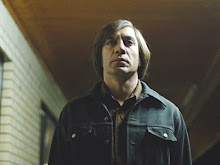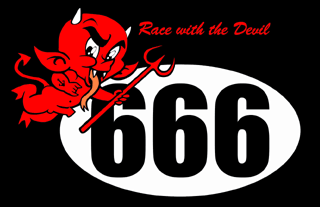
Above is Asia Argento...Dario's Daughter.
Dario Argento was born in Rome, the son of film producer Salvatore Argento and Brazilian fashion model Elda Luxardo. He started his career in film as a critic, writing for various magazines while still attending high school. He did not attend college, electing rather to take a job as a columnist at the newspaper Paese Sera.
While working at the newspaper, Argento started screenwriting. His most notable work was for Sergio Leone, collaborating with Bernardo Bertolucci on the story for the spaghetti western classic Once Upon a Time in the West. Soon after its release in 1969, Argento wrote and directed his first movie, The Bird with the Crystal Plumage, which was released in 1970 and was a major hit in Italy.
His directing style was influenced by Mario Bava, Lucio Fulci, Riccardo Freda, Sergio Leone, Alfred Hitchcock, Michelangelo Antonioni, and Federico Fellini.
Early in his directing career, he continued to concentrate largely on the giallo genre (more precisely known as "thrilling" in Italy, as the word "giallo" usually refers to generic mystery works [it actually means "yellow" in Italian]). The films, like the lurid yellow-covered murder-mystery novels they were inspired by, followed the suspense tradition of hardboiled American detective fiction while incorporating baroque scenes of violence and excess. While Mario Bava is credited with inventing the giallo film, Argento's passion in developing the genre has earned him widespread recognition as the key influence in popularising giallo cinema outside of Italy, and his unique vision has earned him acclaim as an 'auteur' director.
Argento directed two further successful thrillers, The Cat o' Nine Tails (1971) and Four Flies on Grey Velvet (1972). Alongside The Bird with the Crystal Plumage, these initial three films are frequently referred to as Argento's "animal trilogy". The director then turned his attention away from giallo movies, filming two Italian TV dramas and a period comedy (Five Days in Milan) in 1973 before returning to thrillers with 1975's Deep Red, frequently cited by many critics as the best giallo ever made. The film made Argento famous internationally, and inspired a number of other directors to work in the genre (John Carpenter has frequently referred to the influence Argento's early work had on Halloween). It also marked the start of Argento's long creative relationship with composer Claudio Simonetti and his Italian progressive rock group Goblin.
Argento's next movie, Suspiria (1977), an extremely violent supernatural thriller, is considered by many fans to be his best work, alongside Deep Red. Freed from the constraints of the more conventional giallo format, Suspiria is a semi-surreal work of art, where plot and character become secondary to sound and vision. Argento planned for Suspiria to be the first of a trilogy about "The Three Mothers", three ancient witches residing in three different modern cities. The second movie of the trilogy was 1980's Inferno, which went even further towards pure art. However, so far he has not completed the trilogy. In an interview at the 2003 Trieste Film Festival, Argento reportedly said that he was working on the third movie of the trilogy, to start filming in August 2004. However, subsequent reports indicated that financing problems prevented the film's production from proceeding.
Poster for Suspiria.
In-between the two "mothers", in 1978 Argento collaborated with George Romero on Dawn of the Dead, earning a producer credit on the zombie classic. Argento oversaw the European release of the film (where it was titled Zombi) which was much shorter and featured much more of the score written and performed by Goblin.
After Inferno, Argento returned to more conventional giallo with Tenebrae (1982). Then attempted to combine giallo and supernatural fantasy together in Phenomena, also known as Creepers (1985), which was one of Jennifer Connelly's first movies. Phenomena also showed Argento's predilection for using new technology, with its many prowling Steadicam shots. Both of these movies received a lukewarm reception upon release (although each has been re-appraised retrospectively).
Argento subsequently took a break from directing to write two screenplays for Mario Bava's son Lamberto Bava, Demoni (1985) and Demoni 2 (1986).
Opera followed in 1987, and was, according to Argento, a "very unpleasant experience". Set in Parma's Regio Theatre during a production of Verdi's Macbeth, the movie was beset in real life by misfortunes that Argento suspected were caused by the traditional "curse" on Macbeth. Argento's father died during the production, Vanessa Redgrave dropped out of the project before filming began, he had problems working with his former long-time girlfriend and collaborator Daria Nicolodi on-set, and the cast and crew were plagued by minor accidents and mishaps. The movie was again not particularly well received by fans or critics, despite showcasing Argento's skill with color and composition, and featuring some technically impressive camera movements (the ravens' descent in the Parma opera house is considered to be one of the director's most famous set pieces).
It is widely accepted that his 1990s career and onwards has failed to live up to his golden period between Deep Red and Opera. Despite a disappointing collaboration with George A. Romero on an Edgar Allan Poe anthology entitled Two Evil Eyes (1990), an unsuccessful stab at a mainstream Hollywood production (Trauma of 1993) and a disastrous version of Phantom of the Opera (1998) which lost him many fans, he continued to innovate. For example, his 1996 The Stendhal Syndrome, in which a policewoman (played by Argento's daughter, Asia) who suffers from a dramatized version of the illness is trapped by a serial killer in an abandoned warehouse, was the first Italian film to use computer-generated imagery (CGI). Furthermore, the opening of The Stendhal Syndrome was shot in Florence, at Italy's famed Uffizi Gallery, Argento being the only director ever granted permission to shoot there.
Many saw 2001's Sleepless, deliberately designed as a "comeback movie" with its strong giallo theme and numerous references to his earlier work, as a step back in the right direction. However, Argento's follow-up, 2004's The Card Player, a giallo about a killer whose murders are conducted during Internet poker matches with the Rome police, earned a mixed reception: fans appreciated the techno music score composed by ex-Goblin member Claudio Simonetti, but felt the film was too mainstream, with little of Argento's usual flourish.
2005 saw the TV broadcast of Argento's Do You Like Hitchcock?, in which the Italian horror-meister paid homage to Alfred Hitchcock after decades of being compared to him by critics. Later that year, he directed a segment of Masters of Horror, a Showtime television series. The story, "Jenifer", based on an old Eerie comics tale by Bruce Jones, was a departure for Argento, but provided him with some of his best critical notices in several years. Author F. Paul Wilson (The Keep, Repairman Jack) has stated recently that Argento will be directing an adaptation of his short story "Pelts" for season 2 of the series.
It has been confirmed that Dario Argento has begun pre-production on his newest film, the conclusion of his Three Mothers Trilogy, under the working title Mother Of Tears. The last movie of the trilogy was released in 1980 and fans have been waiting ever since. The film will be set in Rome and will center around Mater Lachrymarum. Dario himself and Jace Anderson share writing credits for this movie. A joint effort between the Itallian Studio, Medusa, and the American Studio, Myriad Pictures (which made Jeepers Creepers) will finance the production of the film giving it a large budget, at least compared to his earlier work, and Max Von Sydow has signed on to play an as yet unknown role.



2 comments:
her mother is Daria Nicolodi, not Elda Luxardo.
He was referring to Dario when he said "was Elda Luxardo's child" or whatever, not Asia.
Post a Comment